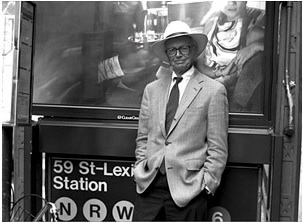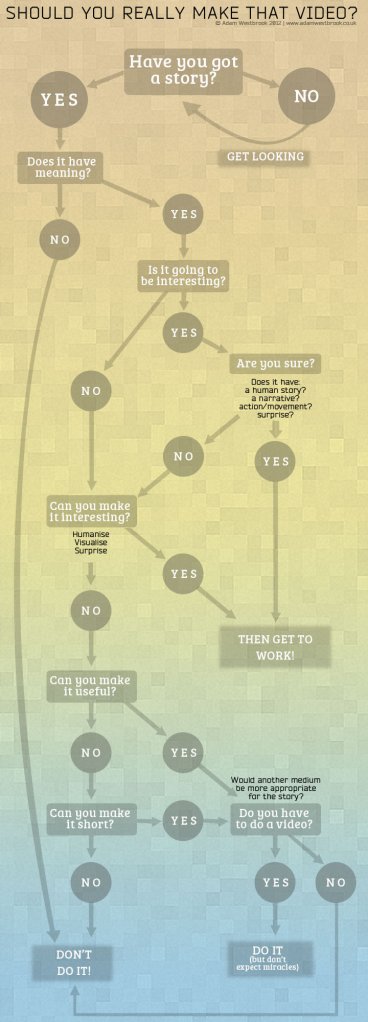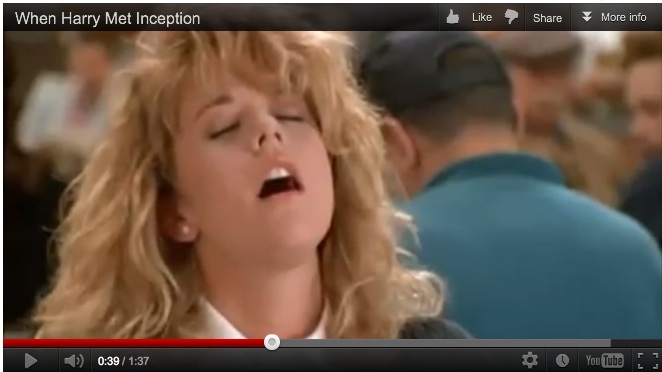What’s New? The Blog
A Great Story About an Issue
I was heading down the stairs at school the other day when someone called out “Anika‘s watching a video and she’s getting all teary eyed.”
And so Anika sent me the video. And I got teary eyed too.
To me it’s a wonderful story and an even better story about an issue for a number of reasons: it has conflict, it has change, it has emotion, it has an unfolding action and it helps me see another view on an issue.
What is doesn’t have is a reporter/narrator, no multiple talking heads (not a single talking head) it has no experts, it does not have multiple sides of the issue.
But it makes me feel something and to understand a little more through that feeling.
And the best part…it’s a true story..

…..and it’s an web ad.
Which brings me back to Anika, who asked me: “Why aren’t more journalists telling stories this way?”
Why indeed?
Using Still Photos Creatively…Very Creatively….. in Video
Here’s a really nice piece of video cut to music that consists only of still images. Cool take on a wedding video too.
Theo Rigby, the guy behind this fun video, has directed, shot and edited another great story about an immigrant family who has both parents deported: Sin Pais One of the assignments is a story about an issue. This would count as a powerful way to tell that story.
Here’s the trailer.
More Video Inspiration
We had 3 weeks of incredible films in my class. The last 2 weeks were my favs: check out Film Festival Two and Film Festival Three
Inspired by everyone I found a few more:
I love the energy and visual style of this romp through Bombay with two guys recording sounds as the basis for music. Notice their use of the tiny GoPro camera, which we have available! send me an email if you want to use it.
______________________
and also this powerful trailer about the storyteller’s Dad, and the line between brilliance and genius:
Visual Storytelling by David Mamet
David Mamet is an amazing writer, known for his award winning plays, screenplays, books and televisi on shows. He’s also a director and he has a quite famous rant in the form of a letter that he wrote to writers of The Unit, a TV show since cancelled.
It shows how well he understands dramatic writing (he won the Pulitzer Prize for drama) but also visual storytelling.
Here’s one of my favorite sections: (The original is , famously, in all caps.)
REMEMBER YOU ARE WRITING FOR A VISUAL MEDIUM. MOST TELEVISION WRITING, OURS INCLUDED, SOUNDS LIKE RADIO. THE CAMERA CAN DO THE EXPLAINING FOR YOU. LET IT. WHAT ARE THE CHARACTERS DOING -*LITERALLY*. WHAT ARE THEY HANDLING, WHAT ARE THEY READING. WHAT ARE THEY WATCHING ON TELEVISION, WHAT ARE THEY SEEING. IF YOU PRETEND THE CHARACTERS CANT SPEAK, AND WRITE A SILENT MOVIE, YOU WILL BE WRITING GREAT DRAMA. IF YOU DEPRIVE YOURSELF OF THE CRUTCH OF NARRATION, EXPOSITION,INDEED, OF SPEECH. YOU WILL BE FORGED TO WORK IN A NEW MEDIUM – TELLING THE STORY IN PICTURES (ALSO KNOWN AS SCREENWRITING)
Take Me On A Journey
I’ve never read William Zinsser‘s classic book: On Writing Well but I clearly should. In part, it’s because one of his 5 tips on how to become a better writer is a huge central concept of how to become a better visual storyteller: take me on a journey. In video for the web in this class (and as a whole) , you need to take someone on a journey, not just give a report.

William Zinsser, a fourth-generation New Yorker, at a subway station near his office in mid-Manhattan.
Here’s an excerpt from a recent phone interview he gave to Poynter.org
“All writing to me is a journey. It’s saying to the reader, ‘Come along with me; I’ll take you on a voyage,’ ” Zinsser said. “These writers do that by never losing sight of the fact that they are telling a story.”
Too often, Zinsser said, people become so preoccupied with writing well that they clutter their stories with unnecessary words that lead readers astray. Good writers make every word count, and they avoid abstractions. “Nobody wants abstractions,” Zinsser said. “They want specific details that help them discover something new.”Ahhh, details. I feel like I beat and beat and beat the concept that close-ups and extreme closeups are crucial to good visual story telling. Nice to see they’re crucial to the written version too.
How To Make Boring Things Interesting in Online Video
Adam Westbrook has a cool post on How To Make Boring Things Interesting in Video.
At the least, when you think of a story for video, run it through this flowchart.
A story is about a very narrow specific part of that topic, often based on a specific character that has a name and a phone number and a surprise
Here’s an excerpt from Adam’s post:
What is video bad at?
Human emotions are probably the most complex things out there but video can convey them better than any other medium. When it comes to other complex issues however, video is out of its depth:- – Politics and meetings: much of it happens behind closed doors, is polemic and involves little physical movement
- – Business, economics and theory: similarly non-visual at first glance
- – Statistics, numbers and data: video and data journalism don’t sit side by side
-
– Interviews (yes, really): video is not designed for people sitting down and talking
“There’s no such thing as boring knowledge. Only boring presentation.”…Dan Roam read more here…
Via Adam Westbrook: Should You Make That Story into a Video? Follow the Flow..
Finding Your Voice
There are two reasons I’m not a fan of narration and voice over….
1) Narration is often often pedantic and poorly written. I realize that it’s very difficult to write clever narration. So I don’t get why it’s overused by reporters who can’t seem to be bothered to have subjects tell their stories in their own words. Sometimes, with a limit amount of time, narration seems like the best way to tell a complicated story in a short time (or rescue a poor talker). But sometimes it’s just the idea that the reporter “can tell it better” or “knows more” than the subject. Arghhh.
2) Voicing narration well is a real art. And I don;’t often hear it done that well. Plus there’s just something about that “voice of god,” tone that really bugs me (btw, I thought God was a woman; so why is so much voice over done by men?) In any case, that just doesn’t work on the web. I’ll let Ira Glass mention a reason:
This question of tone, of how we accidentally alienate potential listeners, is something lots of people in public radio have been talking about lately. A 2010 NPR/SmithGeiger survey of news consumers who rightly should be in the public radio audience, showed that one of the biggest reasons adults say they choose not to listen to public radio is that they’re put off by the tone. One survey respondent said: “This type of story could be interesting, but the reporter’s voice and intonation is soooo affected, upper class, wasp, Ph.D. student-like, it detracts from the story. She speaks like she is writing a novel.” Radiolab has invented a sound that won’t put off smart people who should be in our audience. Simply put: it’s a show that’s out for fun. It’s no surprise that a much younger audience loves Radiolab. It’s no surprise that a huge part of its fan base is people who don’t consider themselves public radio listeners.
But these two guys, Radiolab’s co-creators Jad Abumrad and Robert Krulwich, use a lot of their own voices in their program. But the way they do it makes me really love it. Have a listen.
 Ira Glass continues:
Ira Glass continues:
“Real journalism – and by that I mean fact-based reporting – is getting trounced by commentary and opinion in all its forms, from Fox News to the political blogs to Jon Stewart. Everyone knows newspapers are in horrible trouble. TV news continually loses ratings. And one way we broadcast journalists can fight back and hold our audience is to sound like human beings on the air. Not know-it-all stiffs. One way the opinion guys kick our ass and appeal to an audience is that they talk like normal people, not like news robots speaking their stentorian news-speak. So I wish more broadcast journalism had such human narrators at its center. I think that would help fact-based journalism survive. But like I say, I’m kind of a nut on this subject.”
Check out the entire piece at Transom.org.
Power of Music
A fellow journalist & teacher recently told me he was surprised that we used music with our stories in this class.
There’s no doubt that music has a tremendous power to change the way people feel about a story. I know I wouldn’t use music with a news story but for stories about the rest of our lives, why not? Music is such a big part of our lives and culture and history.
Here’s a great example of how music can change the way we perceive a story, as a humorous mashup, using the dramatic music from the movie Inception and grafting it on to some pretty famous dramatic movie climaxes. This particular version “When Harry Met Inception”, is only slightly NSFW but follow the Wired Magazine link for some other great examples, most NSFW.
Personally, I think everything thing we do as storytellers is manipulation and we just need to start with that statement as the baseline. But maybe that’s a conversation better continued outside the classroom.[For a better mind than mine, check out Ken Burns brilliant take on Jean Luc Godard’s famous “Cinema is truth 24 times a second”.]
Thoughts?
A story about an issue with not a single word spoken
Here’s a lovely example of a powerful story using strong close-ups and a simple unfolding action. There is no interview, no narrator. It has great use of sound, editing techniques and music to build to a crescendo.
Guilty Pleasures…wonderful trailer from a boring subject
The first minute of this trailer is brilliant, especially in the way they marry the images and sound to give a greater meaning to each (check out the great effect of words and pictures at 00.45).
I love the story too. They did a really wonderful job of making a boring scene–someone writing or reading a book–wonderfully entertaining and visual. It’s a great example of brilliant editing and wonderful visual thinking




